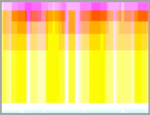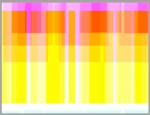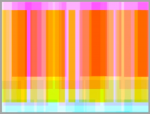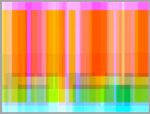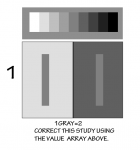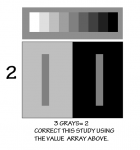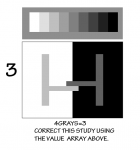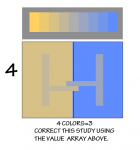Eight people who took the 11-week Color Relationships course last fall have chosen to deepen their learning by participating in a six-part series of monthly “Color Residual” sessions. The first meeting was held on Saturday, January 25.
Some topics that came up, and useful resources, are provided below.
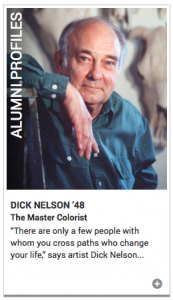 Dick was featured in an alumni profile in the latest edition (Winter 2013) of the Punahou School alumni publication, the Punahou Bulletin. Dick attended Punahou, and later came back to teach and lead the art department. Dick is proud that his 22 years as head of the art department there left a lasting legacy. Comments following the article testify to Dick’s impact and influence. Two of the Color Residual participants are also Punahou alumni (as is President Barack Obama!). The whole issue features art, and another alumnus mentioned was the painter D. Howard Hitchcock. He studied with the impressionists, and Dick admires his paintings of Hawaii scenes. Dick said of him, “The work just glows. He knew how to look.” Dick also thinks Maui artist Macario Pascual has a good sense of color.
Dick was featured in an alumni profile in the latest edition (Winter 2013) of the Punahou School alumni publication, the Punahou Bulletin. Dick attended Punahou, and later came back to teach and lead the art department. Dick is proud that his 22 years as head of the art department there left a lasting legacy. Comments following the article testify to Dick’s impact and influence. Two of the Color Residual participants are also Punahou alumni (as is President Barack Obama!). The whole issue features art, and another alumnus mentioned was the painter D. Howard Hitchcock. He studied with the impressionists, and Dick admires his paintings of Hawaii scenes. Dick said of him, “The work just glows. He knew how to look.” Dick also thinks Maui artist Macario Pascual has a good sense of color.
Dick had recently watched a video of a talk by a current art professor at Yale, but didn’t have it handy for viewing. It is “Color in Context: Revisiting Albers, with Anoka Faruqee”, embedded below. Anoka Faruqee is an Associate Professor of Painting/Printmaking at Yale University. While she admits that she never took a color class while a student at Yale, she gives an introduction to Albers’ exercises and impact, and explains why Interaction of Color is still relevant and influential today, 50 years after its initial publication. Two quotes from her talk that especially struck me were, “Albers was the one who systematically demonstrated color’s elasticity,” and “I think it’s the discipline in the face of color that makes him so successful as a teacher and so widely accessed outside of the field.” An article in the Yale Daily News student newspaper also reports on Albers’ continuing impact on the art department there.
Dick has frequently brought out his large 2-volume set of Interaction of Color ($165 on Amazon) to show and critique solutions to the Albers exercises. Some people weren’t aware that a more affordable version of the book is also available. The latest paperback edition, published in 2013 for the 50th anniversary of the original publication, includes the full text and has more color plates than past editions (although still not all). It’s available for $12 on Amazon. The Interaction of Color iPad app ($10) contains all the text, reproductions of all the color plates, the ability to create one’s own versions of each exercise, and brief video clips.
Dick showed a brief screencast video demonstrating how he achieves vanishing boundaries, color harmony, and a wide range of surprising colors in his tri-hue watercolors. The only colors used are varying opacities of the primary colors yellow, magenta, and cyan. Some still images from the video are shown below.
Future gatherings will respond to directions set by participants’ interests, and will also include brief reviews of concepts from the Color Relationships course. We adjusted the four color deception images below interactively, and discussed how their illusions could be made stronger. To review these concepts, see Week 1, Week 2, Week 3, and Week 4.
